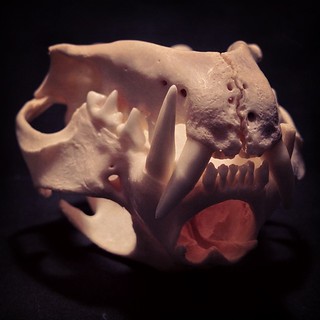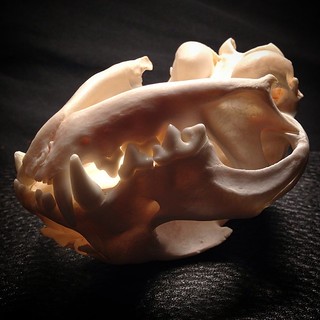
Adipocere is the product of a chemical reaction in which fats react with water and hydrogen in the presence of bacterial enzymes, breaking down into fatty acids and soaps. Adipocere is resistant to bacteria and can protect a corpse, slowing further decomposition. The transformation of fats into adipocere occurs best in an environment that has an absence of oxygen and high levels of moisture. Adipocere formation begins within a month of death, and, in the absence of air, it can persist for centuries.
It is not uncommon for adipocere to be found on bones. Either found in a natural setting or while being processed. I've found that the best time to remove it is either A) when the bones are freshly out of maceration or peroxide and you use a toothbrush to literally brush the adipocere off while submerged in water or B) After the bones have been degreased, had a peroxide bath and then dried. The adipocere become less waxy and more flaky and you can more easily remove it with your fingernail or again, with a toothbrush. This time dry.
Be careful how much force you use on a bone with a brush or fingernail. This rabbit skull for example is going to be a real challenge for me to remove the adipocere as it is a very thin/fragile skull.









